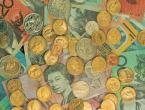EUR/USD
1.17408
0.019%
Gold
4309.28
0.230%
Oil
56.259
-1.758%
USD/JPY
155.374
-0.320%
GBP/USD
1.33611
-0.036%
GBP/JPY
207.600
-0.355%
Fitch Ratings: Neutral outlook for global mining in 2026, with resilient demand.Uber (UBER.N) fell nearly 3% after the U.S. Federal Trade Commission and several states filed lawsuits against the company, accusing it of deceptive pricing practices.The Federal Reserve accepted a total of $2.601 billion from six counterparties in its fixed-rate reverse repurchase operations.Goldman Sachs believes copper prices are vulnerable to price corrections related to artificial intelligence.The U.S. Federal Trade Commission said it and the states have filed a revised lawsuit against Uber (UBER.N), alleging misleading charges and order cancellation practices.











